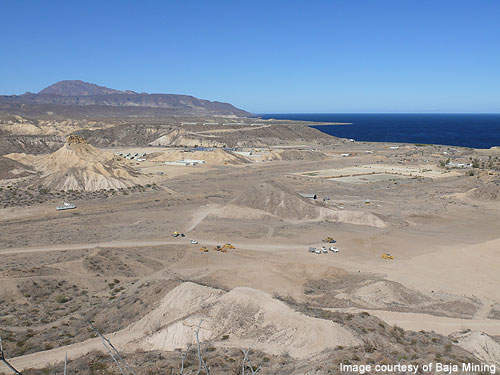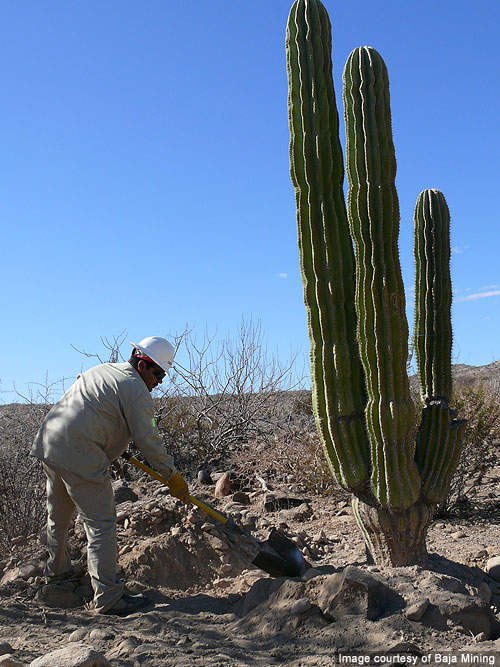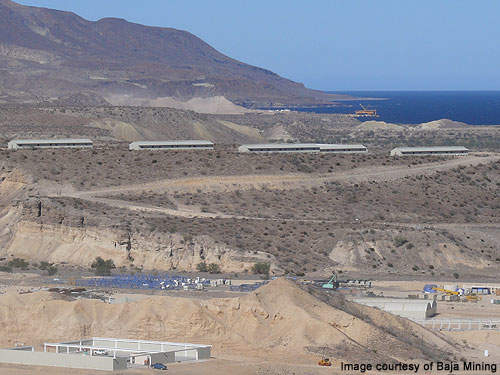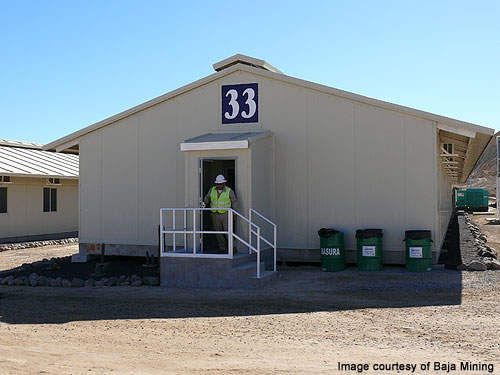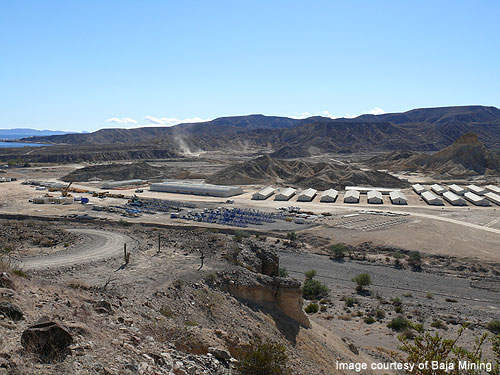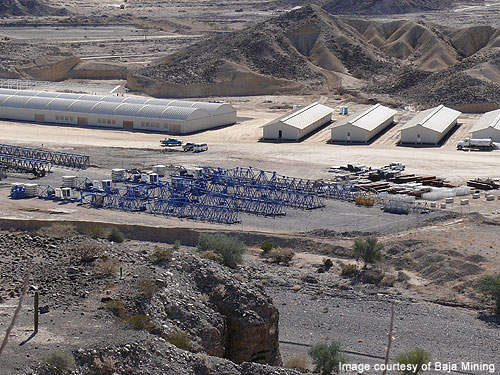The Boleo project is an advanced stage copper/cobalt/zinc/manganese development located in Baja California Sur, Mexico. Discovered in the late 1800s, the property consists of 25 mineral concessions covering 20,490.9ha, with 24 being contiguous.
The property was staked by Baja Mining in 1992. In the mid-1990s, it was optioned to International Curator. Baja Mining acquired it in 2001.
The project is now owned by Minera y Metalúrgica del Boleo (MMB) in which Baja Mining has a 10% stake. The remaining 90% stake is held by a Korean syndicate of industrial companies including Korea Resources Corporation, LS-Nikko Copper, Hyundai Hysco, SK Networks and Iljin Materials.
Construction of the project started in November 2010 and mining operations began in the first half of 2014. First copper from the project was produced on 17 January 2015. The cobalt-zinc circuits are expected to be commissioned by March 2015 and will achieve production ramp-up by October 2015. The mine has an estimated life of 22 years.
Boleo Project financing
Baja Mining secured financing of $823m in debt by the end of September 2010 and $184m in equity in November 2010 for the development of the mine.
In April 2012, Baja Mining reported a 21.5% increase in project cost. The funding requirement for the project was estimated at $1.143bn in 2010, which was further increased to $1.75bn in 2013 for a number of factors including change of scope, design improvements and increase in prices of steel and fuel.
Baja Mining signed a standstill agreement with the lenders in June 2012 following the cost overruns.
In August 2012, the company secured $90m as part of the first stage of financing from the Korean syndicate. Further financing of the project is being provided by the Korean syndicate. The project is estimated to require a total investment of approximately $2bn.
Reserves
The mine contains an estimated 265Mt of measured and indicated copper, cobalt, zinc and manganese resources and 165Mt of inferred resources. The proven and probable reserves are estimated at 70Mt.
Geology of Boleo Project
The deposit lies within the late Miocene aged El Boleo Formation within fine to coarse clastic sedimentary rocks. The rocks lie unconformably over Comondú Volcanics, andesitic rocks belonging to the early or middle Miocene age. The andesitic rocks are underlain by Cretaceous aged granodiorite.
The deposit hosts seven mineralised units or mantos designated as 0, 1, 2, 3AA, 3A, 3, and 4. Towards the east, the mantos dip gently.
The position of the mantos represents a step-like pattern caused by faulting common throughout the deposit. The mantos are clay-rich with less than 1m thick laminated basal zones that lie beneath up to 20m thick intra-basin slump.
Five coarsening upward sedimentation cycles that represent near-shore shallow marine basins with deltaic deposition characterise the El Boleo Formation. The lowermost unit is a limestone bearing unit measuring 1m to 5m in thickness. It occurs over very steep paleo-surfaces together with banding parallel to its base. The unit hosts cherty lenses and non-diagnostic fossil fragments.
The limestone unit is overlain by an extensive, up to 80m thick, gypsum deposit. The unit is flat to shallow dipping with few dome or mound structures. It has laminated to massive and rarely brecaciated textures.
A cyclic succession of up to 270m thick clastic beds forms the next stratigraphic sequence. The cycles range between 20m to 140m in thickness with the earliest cycle being the thickest. It includes basal mud and fine volcanic ash horizon that hosts the mantos. The mantos are covered by progressively coarser material of maroon coloured, tuffaceous claystone, siltstone, feldspathic sandstone, pebbly sandstone and eventually cobble to boulder orthoconglomerates.
The upper, regionally eroded section of the formation is unconformably overlain by barren and fossil-rich similar sedimentary sequences of Pliocene and Pleistocene aged delta and beach deposits namely Gloria, Infierno and Santa Rosalía Formations. The Boleo basin is hosted within the sub-basins of the Santa Rosalía basin. The El Boleo basin comprises the El Boleo and the overlying formations.
Mineralisation
Each mantos is distinct in terms of copper-cobalt ratio and relative zinc, manganese and carbonate concentrations. Mineralisation is finely disseminated in the slump breccias over up to 20m thick intervals.
Ore minerals include pyrite, chalcocite, chalcopyrite, bornite, covellite, carrolite and sphalerite categorised as primary Cu-Fe-Zn (Copper-Iron-Zinc) sulphides; and chrysocolla, malachite, azurite, smithsonite, cryptomelane, pyrolusite and the rare cobalt minerals of boleite, pseudoboleite and cumengite classified as secondary Cu-Zn-Mn (Copper-Zinc-Manganese) minerals.
Mining and processing
The project employs both underground and open-pit mining methods. Approximately 90% of the material is anticipated to come from underground operations and the remainder from surface operations. Room-and-pillar mining methods using continuous miners are used.
The processing plant operates at a rate of 3.1Mt/y. It crushes and mills the ore in seawater. This is followed by atmospheric leaching of the whole ore stream at elevated temperatures. Oxidative and a reductive leach are included in the leach circuit to ensure the recovery of oxide and sulphide minerals. From the leach slurry, the metals are separated in a counter current decantation washing circuit.
The dissolved metals are recovered at high-efficiency from the wash solution and concentrated in four independent solvent extraction circuits, two electrowinning circuits and a fluid bed drying operation to produce high-quality copper and cobalt metal cathode and zinc sulphate monohydrate crystals.
Direct solvent extraction technology is used in the second solvent extraction circuit to separate Mn from Co and Zn in the process solution.
Contractors
FELUWA was awarded a contract to supply quintuplex pumps for tailings disposal at the mine.
FLSmidth Minerals won a contract to supply equipment systems. ICA Fluor, Fluor’s Mexican joint venture company, was awarded the engineering, procurement, and construction management contract.

